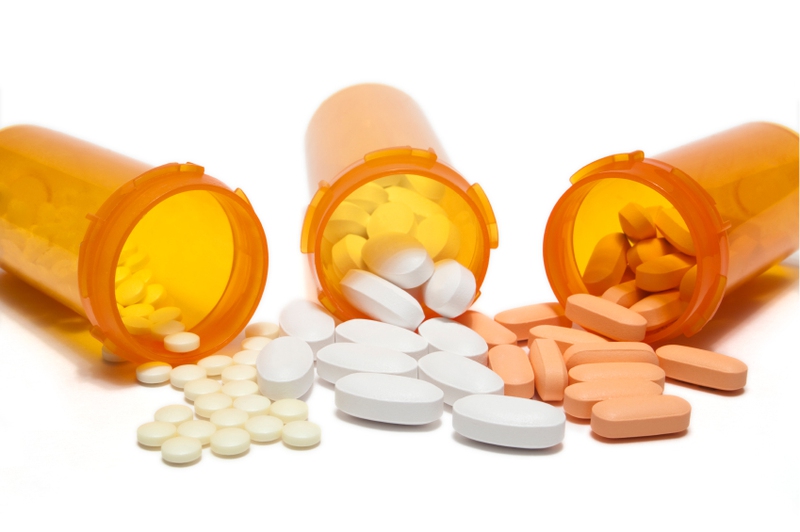Antibiotic are medications that assist in slowing down and destroying the growth of bacteria in the body. They are often used to treat different viral infections like the flu, colds, sore throats and coughs. How do antibiotics work exactly? In this article, we will answer just that and other information related to antibiotic uses.

What Are Antibiotics?
Antibiotics work to either destroy the bacteria in your body or to stop them from being able to reproduce. This type of medication is used to fight against a range of infection that can be life-saving.
Typically, when the body becomes infection with certain bacteria, the immune system works hard to kill the bacteria off. The white blood cells will attack the bacteria it finds as a threat often before symptoms of the infections even occur. In some instances, however, the immune system can not properly perform this vital function, so it needs some extra help.
Antibiotics help the immune system fight off the bacteria it is able to destroy on its own. Penicillin was the first antibiotic and has expanded to various penicillin related antibiotic. The most common antibiotics are amoxicillin, ampicillin, and benzylpenicillin. Antibiotics can only be prescribed by a doctor.
How Do Antibiotics Work Exactly?
There are different families of antibiotic and each family works in a different way to help kill bacteria. The most common families include:
Beta-Lactam. Bacteria can build cell walls when they link molecules together. To fight off these types of bacteria, beta-lactam antibiotics are used. These antibiotics stop the bacteria from building up these cell walls. Without the cell wall to support the bacteria, the pressure builds inside the cell and eventually, the membrane of the cell will burst. Many bacterial infections are treated with beta-lactam antibiotics. The most common of these are penicillin and cephalosporin.
Macrolides. These antibiotics fight off bacterial ribosomes. Ribosomes build protein in the cells and this process can occur in both human cells and bacteria cells. The macrolides only target the bacterial cells, so they are unable to build protein. The protein is vital for the cell to function properly when the macrolides stop the protein building process, the bacteria cells are unable to survive. These types of antibiotics are often used to treat respiratory tract infection or skin infections. Erythromycin belongs to this type of antibiotic.
Quinolones. Some bacteria can copy their DNA, and quinolones antibiotics are used to prevent this process. They work to break strands of the DNA of the bacteria and then ensure the strands cannot be repaired, When the bacteria is unable to mend the broken DNA strands, it will not be able to reproduce or survive. The most common quinolones antibiotics include ciprofloxacin and levofloxacin. They are used to treat bronchitis and pneumonia infections.
Besides, antibiotics are often classified in one of two groups as broad spectrum or narrow spectrum. Broad spectrum antibiotics are the most common types of antibiotics. They are used to fight off a wide variety of bacteria to treat things such as urinary tract infections, pneumonia, stomach ulcers and acne. They are effective at fighting against a number of bacterial infections. The quinolones family of antibiotics would be an example of broad spectrum antibiotics.
Narrow spectrum antibiotics, however, can only be used to fight against very specific or targeted groups of bacteria. How do antibiotics work that fall in the narrow spectrum of antibiotics? They tend to destroy the structure of the cell walls of the bacteria. The beta-lactam family of antibiotics would be considered a narrow spectrum antibiotic.
Side Effects, Allergic Reactions, and Interactions of Antibiotics
The most common side effects of antibiotics include:
Feeling sick
Diarrhea
Fungal infections
Some other side effect can include:
Kidney stones
Blood clotting
Light sensitivity
Loss of hearing
Additionally, some individuals may have an allergic reaction to antibiotics. Some of these allergic side effects can include:
Rash
Swelling of the mouth or face
Trouble Breathing
Be aware that some allergic reactions may not be noticeable at first. Those taking antibiotics should not use other medications or herbal medicines while on the antibiotics unless discussed with your doctor first.
Can Antibiotics Be Used to Prevent Illness?
While antibiotics are most often used to treat infection, there are instances where preventive antibacterial drugs will be used to stop bacteria before it can cause an infection. This is commonly used with babies and children. Some antibiotics that are given as a way to prevent infections from occurring include the following examples:
Penicillin may often be prescribed to children to prevent the occurrence of acute rheumatic fever.
Children who are bitten by an animal or another person will often be given an antibiotic to prevent an infection from growing from the bite area.
How do antibiotics work to prevent infections after a surgery? Children who have medical procedures done are often given an antibacterial medicine prior to the surgery. This is done to prevent any infections from occurring that can be caused from the incision.
Antibiotics used to prevent infections are carefully considered and are often prescribed for the shortest amount of time to be effective.
View All Comments /Add Comment